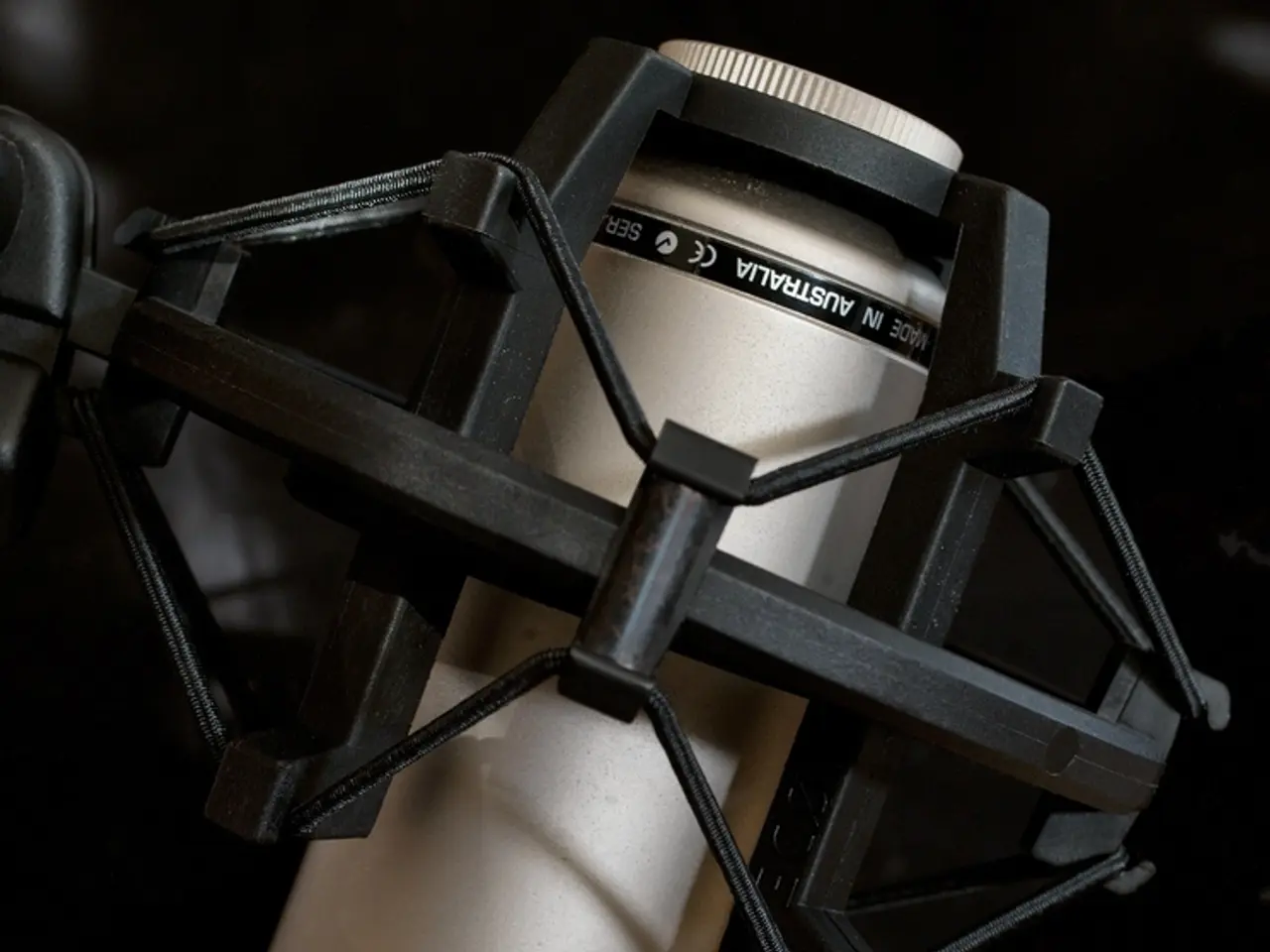Top-notch Microphones Ideal for Podcasting and Live Streaming in 2025
In the rapidly evolving world of podcasting, the choice of microphone can significantly impact the quality of your audio output. Here's a roundup of some of the most popular and top-rated microphones for podcasting in 2025. Each model offers unique features, pros, and cons, catering to various usage scenarios, connectivity needs, and budgets.
Shure MV7
This dynamic, cardioid pattern microphone boasts hybrid USB-C and XLR (3-pin) connectivity, making it versatile for beginners and professionals alike. The Shure MV7+ comes with built-in features such as a gain boost (+18 or +28 dB), digital Popper Stopper to reduce plosives, and the ability to use the MOTIV Mix app for raw audio recording.
Pros: The Shure MV7+ offers versatile connection options, excellent voice clarity, and easy gain control via the app.
Cons: The microphone lacks separate gain or volume controls, and it may be relatively expensive for some users, with a price point of around $299.
Suitable for: Podcast hosts, streamers, voice actors, and remote professionals.
Shure SM7B
An industry-standard microphone renowned for its focused, directional sound, the Shure SM7B is popular in professional podcasting. This dynamic, cardioid microphone offers excellent noise rejection and a smooth wide-range frequency response for vocal clarity.
Pros: The Shure SM7B is an excellent choice for professional podcast studios, streaming, and voice-overs.
Cons: The microphone requires a good preamp to boost its signal, which may be a consideration for entry-level users, and its cost may be high compared to some entry-level options.
Usage: Preferred in professional podcast studios, streaming, and voice-overs.
Samson Q2U
This dynamic microphone offers a unique feature—hybrid connectivity with both USB and XLR output. The Samson Q2U is an affordable option, making it a popular choice for budget-conscious podcasters.
Pros: The Samson Q2U is versatile and affordable, making it a great choice for beginners.
Cons: Sound quality may not be as refined as higher-end models.
Rode PodMic
Designed specifically for podcasting, the Rode PodMic delivers professional sound quality and a robust build. However, it only offers XLR connectivity, requiring an audio interface or mixer to function.
Pros: The Rode PodMic is a great choice for podcasters who want quality hardware and already have audio interfaces.
Cons: Its XLR-only connectivity may limit its appeal for some users who prefer USB connectivity.
Blue Yeti
The Blue Yeti is a popular USB condenser microphone with multiple polar patterns, making it versatile for various recording setups. Its plug-and-play ease of use and multiple pattern selection (cardioid, bidirectional, omnidirectional, and stereo options) have made it a favourite among beginners.
Pros: The Blue Yeti offers plug-and-play ease of use, versatile recording patterns, and is popular with beginners.
Cons: Condenser mics are generally more sensitive to background noise, which may be a consideration for those recording in less-than-ideal environments.
Heil PR-40
The Heil PR-40 is a dynamic XLR microphone with exceptional low self-noise and a wide frequency response that outperforms many condenser mics. However, it requires an external preamp to function optimally.
Pros: The Heil PR-40 offers professional-level audio quality with a focus on clarity and depth.
Cons: Its higher price point and the need for an external preamp may be considerations for some users.
In conclusion, for beginners or those seeking plug-and-play options, USB microphones like the Shure MV7+, Samson Q2U, or Blue Yeti are excellent choices. For professional setups, dynamic XLR microphones such as the Shure SM7B, Heil PR-40, or Rode PodMic paired with good preamps or mixers deliver high-quality sound. Each has trade-offs between price, connectivity, noise handling, and ease of use—choose based on your recording environment and budget.
The Shure MV7+ and Blue Yeti, with their USB connectivity and user-friendly features, are suitable for beginners or those seeking a plug-and-play option, showcasing the influence of technology in making gadgets more accessible. On the other hand, professionals may prefer the Shure SM7B or Heil PR-40, dedicating gadgets like microphones to specialized tasks with higher audio fidelity, underscoring the significance of technology in enabling high-quality performances.




